During a journey through the middle east, I went to the kingdom of Jordan, a small yet extremely charming country that is located among Israel, Syria, Iraq and Saudi Arabia. When closing my eyes and thinking of Jordan, my mind is filled with sparkling Sunray shining over the desert that has witnessed the rough history of the country. Jordan bears a dry beauty, the fierce of wind and sunshine, and the mystery of thousands of years in the ancient time. I have great nostalgia for the ancient city of Petra and the desert of wadi rum, two of Unesco’s world heritage sites located in southern Jordan. Many times i stood still, admired, an engraved every single moment into my mind and felt their beauty with all my heart. More than ever, i got lost in the middle of a civilization that had reached the peak of prosperity and featured a magnificent wild nature, the two opposite extremes that surprisingly transformed into a united entity.
[rpi]
PETRA, JORDAN
The treasure of the Nabatean people
Along The King’s Highway from North to the South Jordan, I stopped in Petra, the capital of the ancient Nabateans. The city today is called Petra, which means “stone”. Ancient people once called this city “multicolour”, Raqmu, due to the delicate blue, white, yellow, and black lines of colours of sandstone in the city.
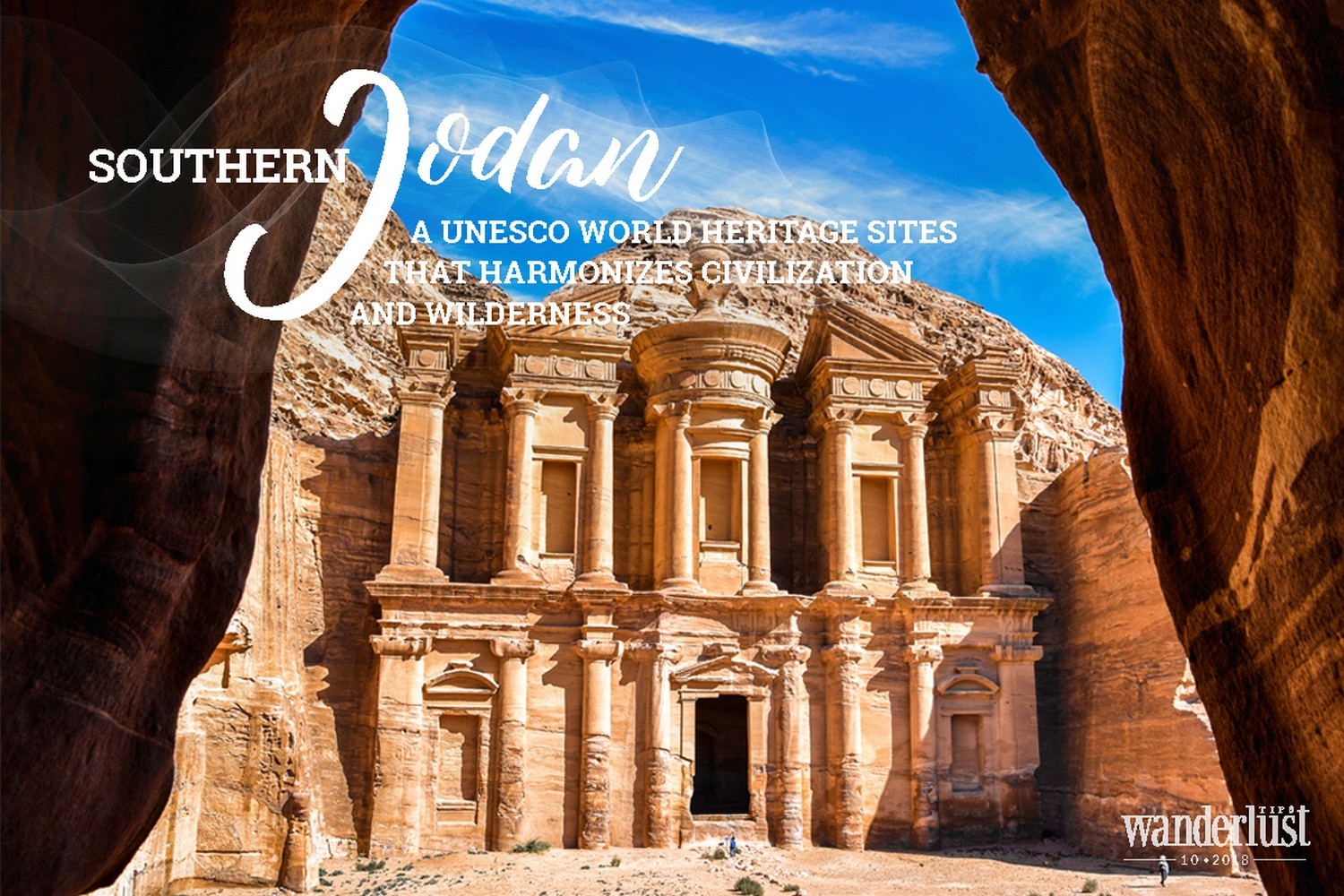
Throughout the centuries, right before and at the beginning of the Current Era, the Nabateans and talented architects from Egypt, Greece, and Rome created a unique Petra, with magnificent constructions influenced by the greatest civilisations architecture from those times. The flow of the former Wadi Musa, which flowed through the Siq into the centre of Petra, was changed by a large dam. Since then, Siq has become the mysterious entrance of a city that seems to exist only in dreams.
During the time Petra flourished most, it used to feature large straight stone-paved roads, tombs, and sanctuaries carved from sandstone, endless stairs on the mountainside amidst land and sky, leading to the highest peaks of mountains which were considered to be one of the most sacred places. In the past, Petra was not surrounded by desert but fertile vineyards and olives gardens that were drained by canals and reservoirs, which were the achievements of the Nabateans in irrigation technology. They dominated the water resource, and hence owned a vast desert located on a favourable location between Egypt and West Asia.
However, people from that era were defeated by natural disasters. After many strong earthquakes between the 4th and 7th centuries, most of Petra’s architectural and agricultural works had been destroyed. The dams were damaged, so they no longer could prevent the Wadi Musa from filling the city’s entrance. Nabatean techniques were gradually forgotten, and Petra fell into oblivion, separated from the outside world. It was just a residence for a few nomadic Bedouin, the descendants of Nabatean people.
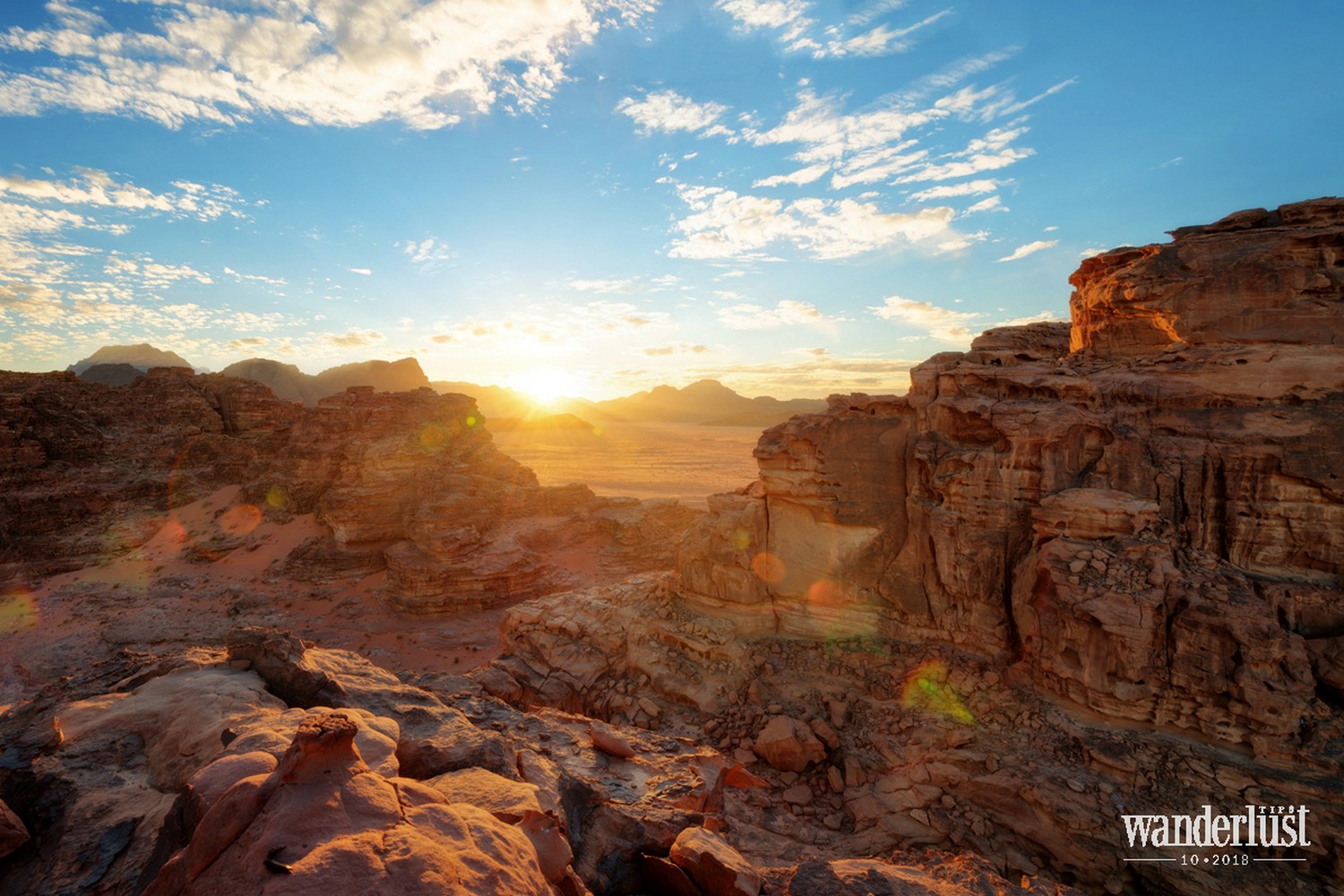
Soaring sandstone walls, which were formerly the natural walls protecting the city, have now become the guardian of the loneliness and isolation of Petra. Maybe, inside these walls, Petra is still as immortal and intact as when the Nabateans left thirteen centuries ago. Petra is still immortal and intact like when the Nabateans left thirteen centuries ago.
The immortal kingdom of Jodan
Early morning, the first time I walked in the ravine of Siq and listening to the sound of my own footsteps that echoed off the 200-metre cliffs, I wondered if I was going back in time. The early morning sunlight did not reach the bottom of the narrow road, making it look like a corridor covered with magical purple. And at the end of the tunnel, before I could turn back from my dreamy world, I stood in front of a world wonder – Al-Khazneh. Al-Khazneh, which means “The Treasury” in Arabic, was named after the legend of Pharaoh’s treasure which is believed to be hidden there according to the Old Testament in the Bible. Built in the 1st century BC, carved deeply into the red rose sandstone, Al-Khazneh was truly an architectural treasure, featuring an ancient Greek style that was both elegant and dignified. In silence, I admired each elegant line of the architecture under the sunlight, and my heart skipped a beat.
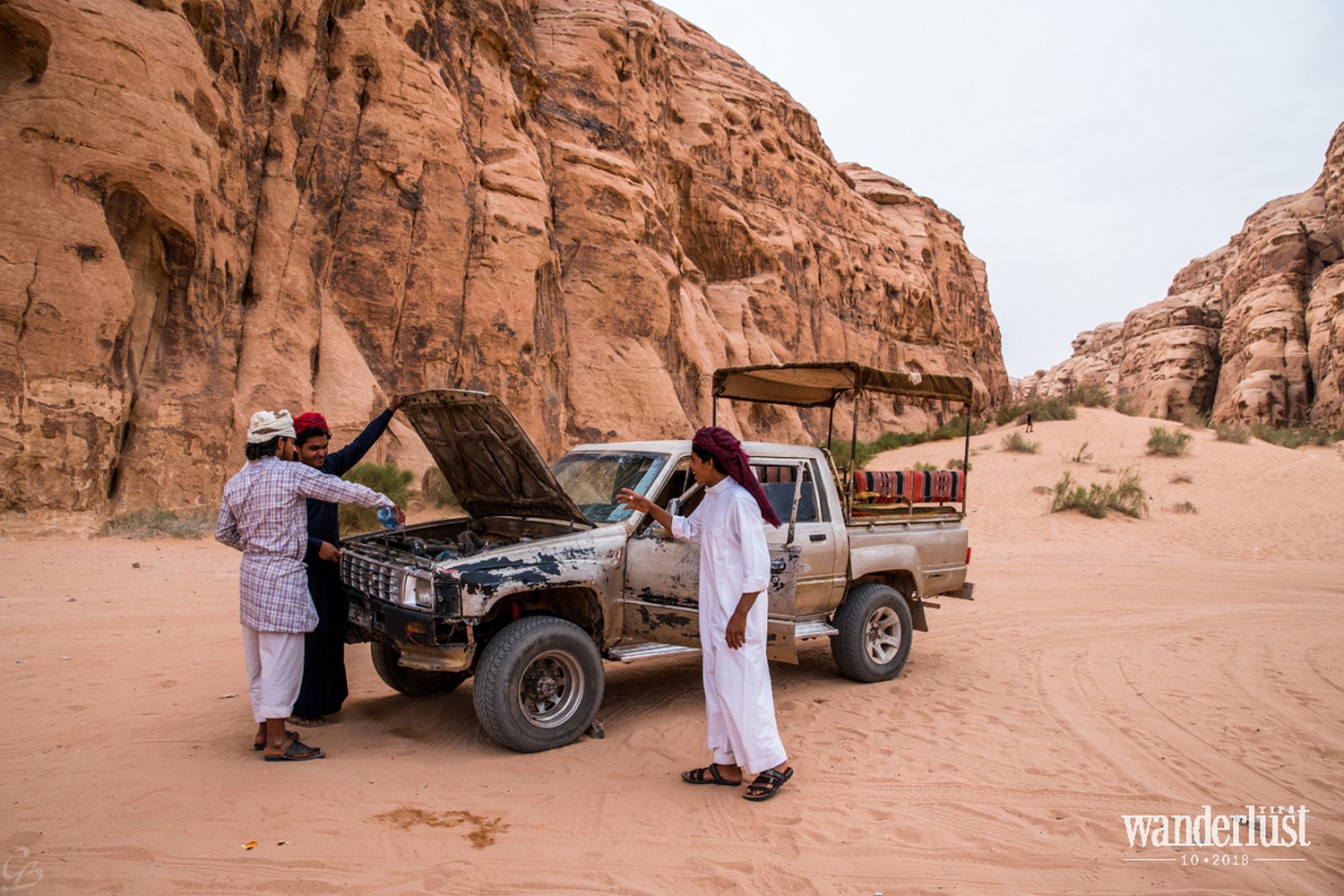
Petra is larger than I imagined, spreading over tens of square kilometres. And Al-Khazneh was just the beginning of a journey to explore Petra on the trails along the main road, crossing the mountainside through the deep valley. I continued to follow the call of the thousand-year-old culture of the Nabateans, stopped at theaters, tombs, and temples nestled deep in the heart of the mountain: the royal tomb, the main Temple, the Temples of the Winged Lions, monastery, and Roman soldiers’ grave. The Nabateans, like other ancient tribes in the world, showed great respect to the world of the deceased. They built many tombs on high cliffs to preserve Nefesh – one of the two human spirits according to the Nabatean faith.
May is early summer time in Jordan. After a few hours walking on the trail, it was already midday. The burning heat of the desert rose from the red sand. Streams flowed gently in narrow valleys, the only source of life of pink nerium oleanders were drying up. I patiently walked on the trekking paths leading up the high mountain, and was amazed by the scenery. Petra relentlessly attracted me as if it wanted me to stay there forever to admire each feature of the five-coloured stones on the mountain inside the tombs, being amazed at the charming Greek temples secluded in a hidden valley. Sometimes, I stood in the gentle breeze at a mountain peak, watched the dust blown up by camels running below in the shadow of the afternoon. Another time, I was completely mesmerized by the sunset shining through the partly collapsed entrance, covering a warm colour on the distant tombs.
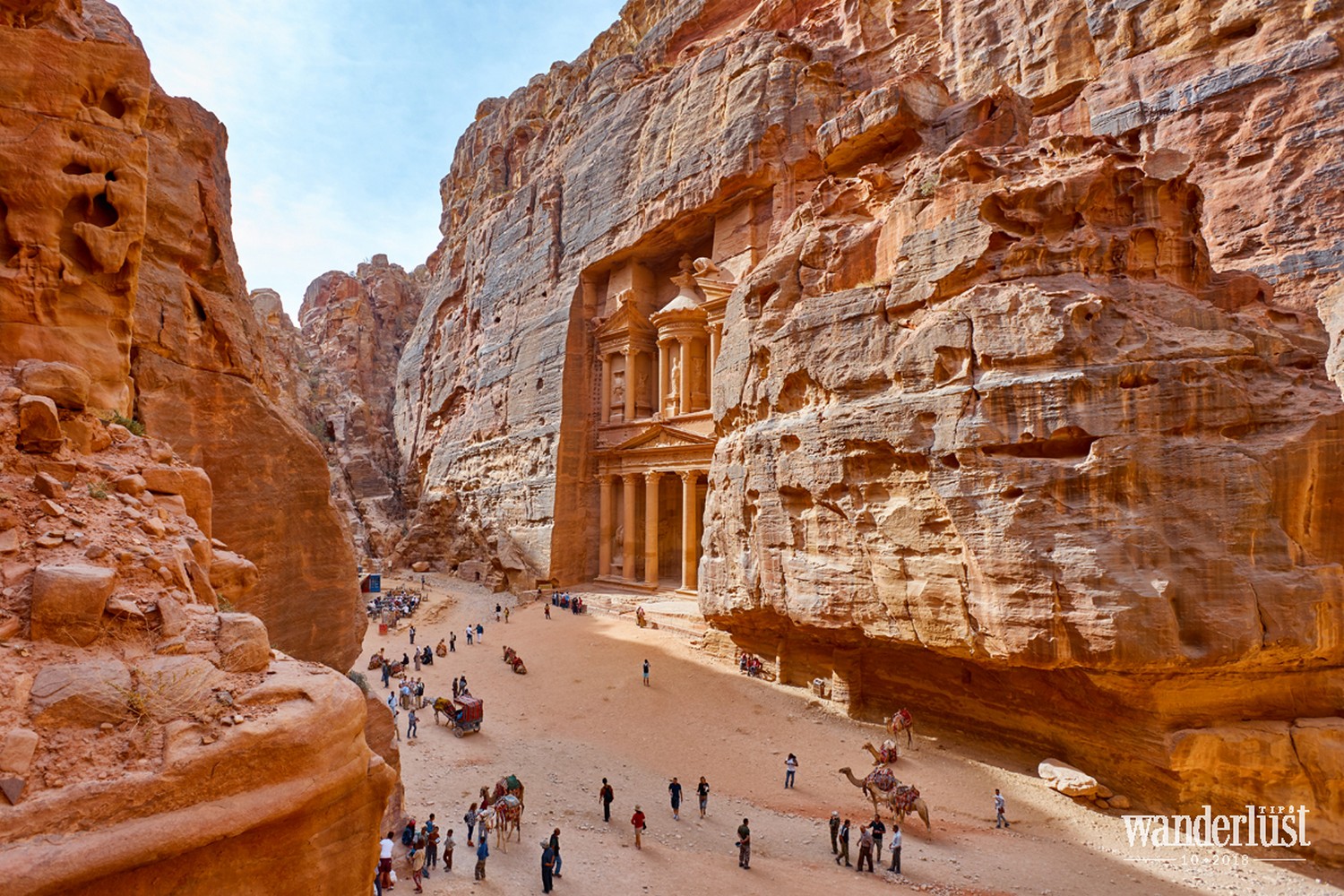
Petra, though never obtrusive or cumbersome, is still splendid and prominent in its own way. Petra at that time looked so modest, which made me slowly fall in love. During the days, I was always among the first tourists to come to Petra in the morning and left in the evening. When there was no one around, I felt like Petra belonged to only me, and the soul of the city was right next to me.
The Valley of the Moon
Saying goodbye to Petra, I moved to Wadi Rum, which means “the Valley of sand” in Arabic. It is also known as the Valley of the Moon. Wadi Rum, the vast desert in the south, bordering Saudi Arabia, was my final destination in Jordan. It was not Petra but Wadi Rum that makes me miss Jordan the most. Therefore, each line I wrote about Wadi Rum was a hasty writing, as if I was afraid that beautiful memories of this land would be like the smooth sand that would flow through my fingers and and disappear just as a desert whirlwind.
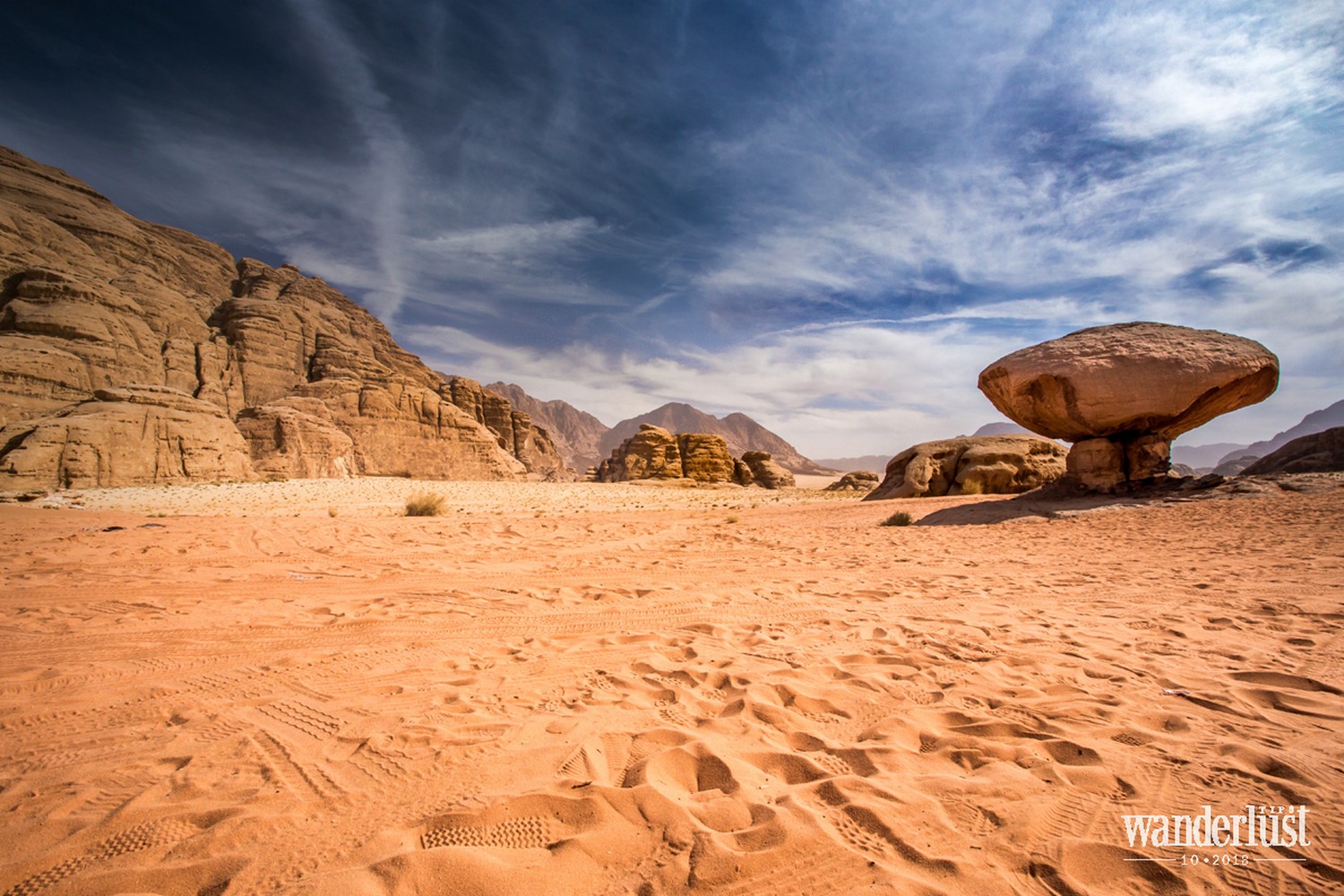
Wadi Rum is not like any other desert I have ever been to. This is neither a white sandy desert filled with dusty cacti nor golden sand dunes under the monotonous blue sky. I love this place because of its strong, wild yet gentle beauty. Around the valley, sandstone stripes in all shapes which change colours in accordance with the degree of the sun are the charming features of this place. The vertical multicoloured cliffs looked like they rose from the air, wonderful and mysterious. The long red, yellow, and white stretches of sand connected to each other as if space was endless. In the desert, we found some Bedouin nomadic huts and camels gathered under the Acacia trees.
The spectacular and surreal scenery of Wadi Rum is often chosen by Hollywood filmmakers to be used as movie sets. “Red Planet,” “Star Wars Rogue One,” more recently, “the Martian” with the actor Matt Damon, and Ridley Scott’s “Prometheus” were all shot at this location. But perhaps the most famous foreigner here is the British archaeologist, military officer Lawrence. The movie “Lawrence of Arabia” was based on the real story of TE Lawrence, and won seven Oscars. The film reprinted his life and The Arab Revolt of 1916-1918. Colonel Lawrence described the desert as “vast, echoing, divine” and 100 years later, Wadi Rum remains the same.
Echoes from the desert
Looking from above, Wadi Rum appeared like a picture printed on an old postcard. You had seen it hundreds of times but accidentally lost it. Then in an afternoon, you found it in a book with wrinkled corners and faded colour. This time, you find yourself standing somewhere in the picture. When travelling long enough, we know that at every destination we will find something special. Arriving in Wadi Rum, I seemed to find myself.
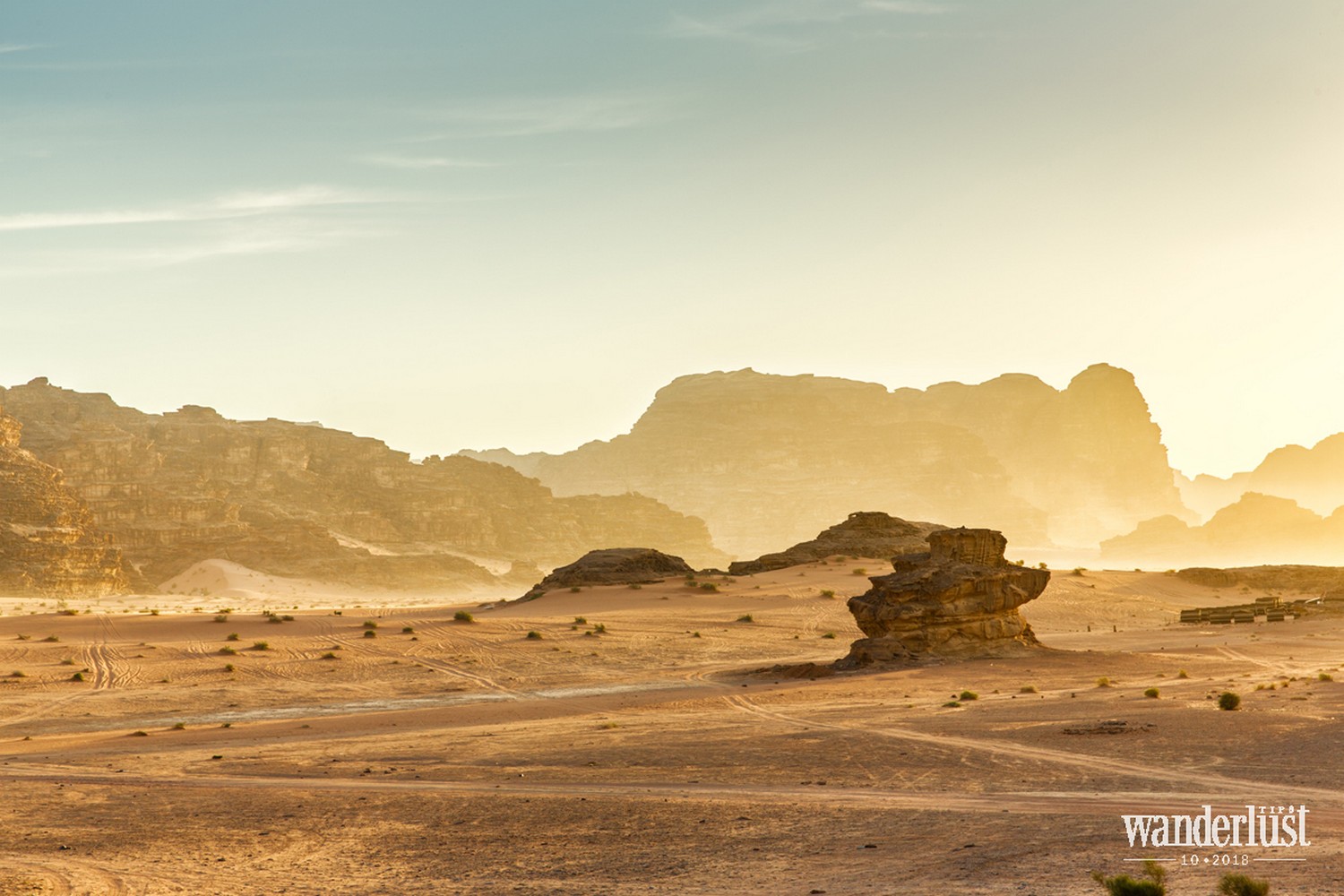
Wadi Rum is a combination of quiet and intense. I was really fortunate to have a chance to admire these different aspects. In the days I stayed there, the sunlight was not as mild as it usually was. Wadi Rum was stormy during that time. One afternoon, layers of clouds covered the whole sky. There was thunder and lightning, the whirlwinds came and blew away. It seemed like the thunderstorm was about to approach. But then, in the blink of an eye, it disappeared. Another day, the rain came. Raindrops were falling on the car window and the dusty sand. Hail then came down, falling on the hut where I was staying. The hailstones were the size of chicken eggs, pounding on the red sand. After that, black clouds disappeared as quickly as they arrived, leaving me in real surprise.
Dawn and sunset are the two most glorious moments in the desert. In the midst of the rain, the sun was about to descend below the last layer of clouds. Space suddenly flashed one last time, like a miracle. The colour changed from light pink, bright red, to deep purple; it appeared so silent in the sky but so intense in emotion.
In such weather, I could not follow my plans. The little boy Farar led the way, taking me to shelter at his family’s hut. Between the two whirlwinds, he told me to climb a mountain peak to admire the scenery, and then hurriedly called me to climb down when the storm suddenly came. In Wadi Rum, there are only a few Bedouin tribes, they all know each other and it seems like they are blood-related. Farar belongs to the Zalabia tribe. He proudly took me to the water source where many years ago, his grandfather first set up a camp and still resides to this day. I loved hearing his stories about the life of a nomad while drinking a cup of tea mixed with herbs. Bedouin tea is different from Moroccan or Turkish tea. People often boil black tea with all kinds of fragrant leaves grown and found in the desert such as sage or thyme, and they also like to add a bit of sugar. The black tea is moderately sweet and fragrant. In the midst of the desert, the dry grass burns under the teapot, spreading the flames of red fire into the darkness.
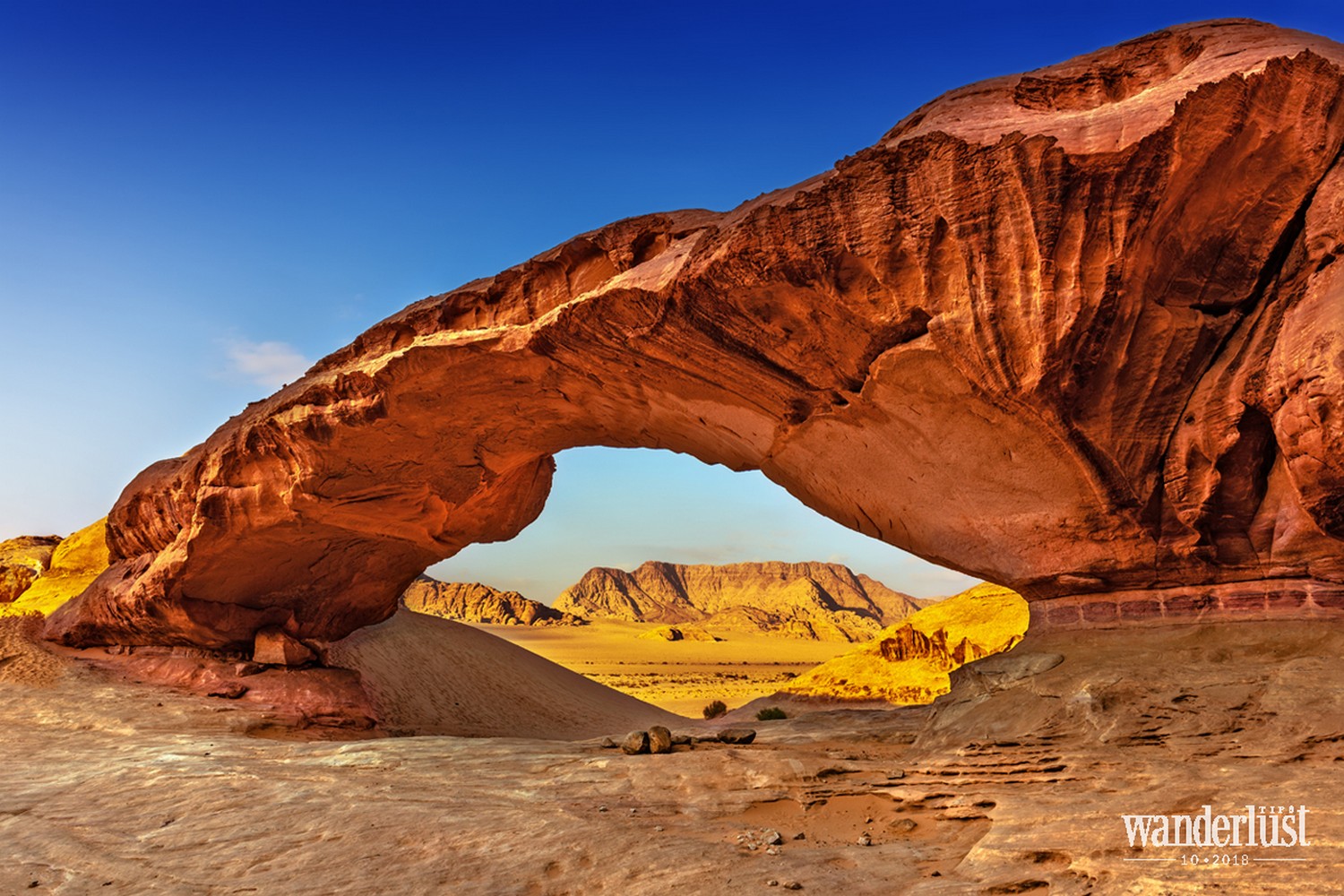
In the dark, I heard the echo of the desert as if it reflected my soul. Surrounded by the soundless space, the sand lay silently. Everything was so quiet that if it was not the desert, I would have sworn I could hear the sound of the trees sprouting. Then I jumped in the old car without headlights, it screamed then drove into the darkness.
W.TIPS
VISA. Jordan does not have an embassy in Vietnam. Therefore, to obtain a visa to Jordan, you will need to send your documents and papers to the Embassy of Jordan in China. Once your application is approved, you will need to bring your passport to the Embassy of Jordan in China to affix visa.
CURRENCY. The currency is Jordanian Dinar (JOD). JOD1 ~ VND33,000 (current exchange rate).
TOUR IN WADI RUM. Wadi Rum is completely wild and has no roads. Therefore, you should buy a tour from local people to avoid getting lost. The tour usually starts at 9 am or 10 am in the Wadi Rum village and lasts from 1 to 3 days. You should try to find a tour company that offers a camp located in the valley for more convenient movement and to watch the sunrise and sunset. A 2-day tour costs about JOD120 per person. If you want to try a camel ride for 1 hour, you need to pay an extra JOD20 per person.
ACCOMMODATION. In high season, especially in Petra (Wadi Musa), you should book early, months to weeks in advance, to get good and cheap accommodation. Hotel prices in Jordan are variable, depending on the location. For example, in Madaba, a double room with a hot shower will cost only JOD27 per night, but in Petra, the room rate may be up to JOD60.
RELIGION. The religion of the Jordanian Kingdom is Islam. Here, the girls should dress modestly, it is recommended not to wear an open-sleeve shirt and short skirts in public to express the respect to the locals. If it is too hot, you can wear a long, thin scarf instead of a sleeveless dress.
LANGUAGE. Jordanian people speak Arabic. However, at tourist sites, salespersons, caterers, taxi drivers, and hotel receptionists can speak English.
CUISINE. Jordan’s food is very suitable for Vietnamese. Rice, bread, vegetables, and soup are all delicious. Some must-try dishes in Jordan:
- Mansaf: a traditional Jordanian Bedouin rice dish. Rice is mixed with roasted peanuts, sprinkled with yogurt, and served with lamb or chicken.
- Maqluba: Chicken rice cooked in a pan and then placed “upside down” on a plate.
- Warak Enab: rice served with stuffed grape leaves.
- Tabbouleh: Tomato salad with herbs, lemon juice, and olive oil.
- Hummus, mashed chickpeas or other beans, blended with tahini, olive oil, lemon juice, salt and garlic, served with bread.
- Jordanian tea is also not to be missed. Bedouin people make black tea with mock orange and sage, then add sugar; it is moderately sweet and has a light aroma.
Wanderlust Tips


[…] true explorer seeking to wander through forests and conquer the wilderness must have a GPS tracker. If you need to find out the height, direction or coordinates of a […]
[…] such as the Thyssen-Bornemisza, Prado and Reina Sofia Museums and the “Landscape of Light,” a UNESCO World Heritage Site, the hotel provides the perfect place from which to embark on an immersive journey through Madrid […]